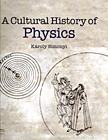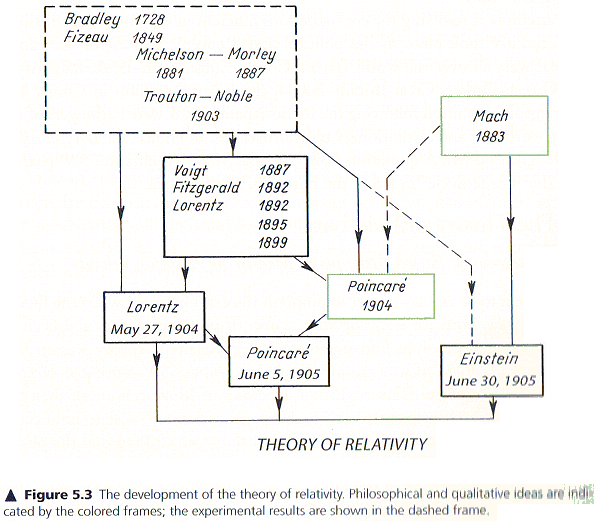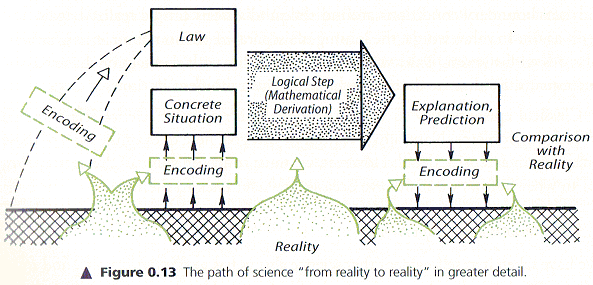- About MAA
- Membership
- MAA Publications
- Periodicals
- Blogs
- MAA Book Series
- MAA Press (an imprint of the AMS)
- MAA Notes
- MAA Reviews
- Mathematical Communication
- Information for Libraries
- Author Resources
- Advertise with MAA
- Meetings
- Competitions
- Programs
- Communities
- MAA Sections
- SIGMAA
- MAA Connect
- Students
- MAA Awards
- Awards Booklets
- Writing Awards
- Teaching Awards
- Service Awards
- Research Awards
- Lecture Awards
- Putnam Competition Individual and Team Winners
- D. E. Shaw Group AMC 8 Awards & Certificates
- Maryam Mirzakhani AMC 10 A Awards & Certificates
- Two Sigma AMC 10 B Awards & Certificates
- Jane Street AMC 12 A Awards & Certificates
- Akamai AMC 12 B Awards & Certificates
- High School Teachers
- News
You are here
A Cultural History of Physics

Publisher:
Chapman & Hall/CRC
Publication Date:
2012
Number of Pages:
622
Format:
Hardcover
Price:
59.00
ISBN:
9781568813295
Category:
Monograph
[Reviewed by , on ]
Alex Bogomolny
06/25/2012
I have to admit some difficulty in reviewing this book, even though initially I felt that it would be straightforward. Indeed, some features of the book manifest themselves at first glance. It is rich, probably comprehensive, lavishly illustrated, beautifully executed, with a tremendous number of quotations and unabashed use of equations. The author — who unquestionably has an uncommon talent for illustrating and organizing his ideas — made a tremendous effort to convey his extensive knowledge to potential readers. As chance would have it, I even stumbled on a curious morsel that reminded me that my physics notions needed a refresher — more on this later. Writing a book like this had to be an arduous yet intellectually rewarding and deeply satisfying experience for the author. It had to be a man’s life’s work.
My first impression was confirmed in the Foreword by the author’s son, Charles Simonyi,
An exceptional book such as this could have been created only under exceptional circumstances. … in the politically charged atmosphere of the 1960s in Hungary … he (my father) progressively lost his directorship at the Physics Research Institute, his post as department head, and finally his teaching position altogether. … The break in his career at midlife did not drive him to despair; his humanism instead commanded him to work on the subject he had perhaps always wanted to work on: the history of the interplay of science and the humanities. His first notes became a lecture series, first given off campus, in the evenings at the invitation of student organizations. … The success of these lectures gave rise to the present book that he continued to revise and extend until his death in 2001.
This is indeed how it felt: a work of an intellectual giant going after his dream of generously sharing his vast knowledge. My difficulty is of course in being able to adequately relate the worth of the treasure that the book is in a short review. I doubt that even a long review could give the book its due.
I shall only mention that the coverage of the scientific developments in the West is undoubtedly comprehensive. After discussing philosophy of science and historiography, the author notes one of the first documented abstractions, to wit, an image of bison on cave walls, and ends with the Standard Model of quantum mechanics; mentions of quantum chromodynamics, Grand Unified Theory, and TOE (the theory of everything). The point is of course in what is in-between. You can form your own opinion of the quality of the book from the excerpts available online.
One characteristic of the book is abundance of diagrams that represent various ideas in compact, visual format. Here is one example:

For another example, I’ll use that morsel of information I mentioned earlier, although it is bound to betray the lack of fluidity in my knowledge of physics, which admittedly has grown stale.
The piece I came across is a mention that Hendric Lorentz — a 1902 Nobel Prize winner and Einstein’s precursor — developed his theory of electromagnetic fields (1891) assuming that “the immaterial ether was the carrier of electromagnetic fields, created by resting or moving electric charges.” He was naturally aware of Michelson-Morley’s experiments performed in 1881 and 1887. What I had to have remembered is that the final nail in the coffin of the until then prevalent theory of ether was hammered in by the Einstein’s theory of relativity; and that it took some extra experimentation by Trouton and Noble (1903).
Here is how the development of the special relativity is illustrated in the book:

The diagram may lead us to question the unique contribution to the theory of relativity made by Einstein, and Simonyi addresses this question by quoting first from Einstein and then from Pauli’s monograph, Theory of Relativity:
Lorentz and Poincaré had taken Maxwell’s equations as the basis for their considerations. … He (Einstein) showed that only the following simple axiom in electrodynamics needed to be assumed: The velocity of light is independent of the motion of the light source.
He then writes,
Einstein was the first to break consciously and decisively with the notions of the absolute space and absolute time and thus to reject the existence of a distinguished reference system K0 and hence also the necessity of the ether, and therefore its existence.
These pronouncements underscore the concept set up in the Introduction that physical theories — very much like mathematics — are to a great extent axiomatic. Simonyi prepares the reader for such a view on physics with a discussion which is summarized in the following diagram:

The author does not subscribe to the view of mathematics being deductive and the rest of sciences inductive endeavors. The physical laws as we know them are abstractions that reflect our experience but also require verification by experimentation. The process of verification confirms or refutes hypotheses that have been arrived at by deductive process from the physical laws.

The process is in fact much more complex, so that the author goes on to explain the step-by-step process of scientific development and provides a more detailed illustration:

In the author’s view, “Human culture is a single, unified whole, and it is only for us, the consumers of culture, that the problem arises how its significant elements are to be selected, appropriated, and transmitted.” Accordingly, in the next diagram he emphasizes the transmission of cultural legacy rather than of any specific knowledge

In the Introduction the author writes,
There is so much to be found in the history of physics that can make instruction at all levels, from elementary school to university, interesting, indeed exciting: There are amusing anecdotes, to be sure, but also tales of tragic conflicts, entertaining accounts of historical events, and the birth pangs of clarification of concepts and methods — which has a philosophical aspect as well. All of this is highly suited to awaken interest in the student and provide valuable educational experiences. Moreover, the history of physics abounds in examples of lofty ideals and guidelines for ethical behavior.
I wish end this review with a paraphrase: There is so much to be found in this book that make using it at all levels, from elementary school to university, interesting, indeed exciting. In the Preface, the author indicates that one of the book goals was to promote public understanding of science. To this end the book needs to be read and used. I am convinced that those who do read the book will enjoy the experience and end up with a cherished possession.
Alex Bogomolny is a former associate professor of mathematics at University of Iowa. He lives in New Jersey, maintains a popular site Interactive Mathematics Miscellany and Puzzles, with a server somewhere in Michigan, and blogs at CTK Insights.
Introduction
The History of Physics and Its Relevance to Our Lives Today
Assessment and Division into Epochs
Elements of the Philosophy of Science
The Dynamism of History
The Classical Heritage
The Greek Inheritance
The Harmonious, Beautiful Order
Matter and Motion: The Aristotelian Synthesis
The Greatest Achievements of the Ancient Sciences
The Twilight of Hellenism
The Stewards of the Heritage
The Thousand-Year Balance Sheet
The Salvage of Ancient Knowledge
The Indian and Arab Worlds
The West Awakens
Medieval Natural Philosophy
The Renaissance and Physics
Demolition and the Construction of a New Foundation
The World in 1600
Numerology and Reality
Galileo and Those Who Stood in His Shadow
The New Philosophy: Doubt Becomes Method
Light, Vacuum, and Matter through the Middle of the Seventeenth Century
After Descartes and before Newton: Huygens
Newton and the Principia: The Newtonian Worldview
The Completion of Classical Physics
Starting Capital for the Eighteenth Century
Worthy Successors: d’Alembert, Euler, and Lagrange
The Century of Light
From Effluvium to the Electromagnetic Field
Heat and Energy
The Structure of Matter and Electricity: The Classical Atom
The Physics of the Twentieth Century
"Clouds on the Horizon of Nineteenth-Century Physics"
The Theory of Relativity
Quantum Theory
Nuclear Structure, Nuclear Energy
Law and Symmetry
Mankind and the Universe
- Log in to post comments




